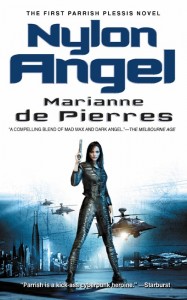 The original Noumenon was a Science Fiction Fanzine with occasional comic strips and illustrated covers. It was written, edited, produced and published from Waiheke Island, Auckland, by Brian Thurogood. He encouraged artists of all types and abilities to contribute, as published articles, news items and reviews. Issue number 1 was dated March 1976. The last issue was number 46/47 in June 1982.
The original Noumenon was a Science Fiction Fanzine with occasional comic strips and illustrated covers. It was written, edited, produced and published from Waiheke Island, Auckland, by Brian Thurogood. He encouraged artists of all types and abilities to contribute, as published articles, news items and reviews. Issue number 1 was dated March 1976. The last issue was number 46/47 in June 1982.
Colin Wilson, who also helped with the artwork and design and production of Noumenon was a creator for Strips Comic Fanzine. Issue number 1 was dated February 1977. The last “Waiheke” issue was number 18 in July 1982. Strips continued until issue 22 in 1986.
An extensive history of NZ fanzines was compiled by Nigel Rowe in a number of iterations of Timeless Sands: http://www.sffanz.org.nz/lists/Timeless_Sands.pdf
Mentions of Noumenon frequently appear in fanzine histories:
| NOUMENON, The New Zealand Science Fiction Magazine, was consistently directed at readers of contemporary science fiction in New Zealand, but also looked at fan activities like conventions and fanzines. Many familiar names appeared in its letter column, and contributed material.
Issue #11 contents include Thurogood’s editorial, Quidnunc’s Page, featuring notes on the approaching release of The Silmarillion; Viewed from Another Shore, a column on SF and illustration by Rollo Treadway; a column by Pete Graham, Broad Moonlight; The Long Result: A Glimpse into the use of Time in SF by Bruce Ferguson; Rags, Solecism and Riches, a listing of fanzines and other magazines received in trade; Book reviews by Bruce Fergsuon, Chris Fountain, Pete Graham, Tim Hassell, Rod Scott and Thurogood; Letters of comment from Mike Glicksohn, Gil Gaier, Ira Thornhill, Lynne Holdom, Bruce Ferguson, Dave Pengelly, A. Bertram Chandler, Don D’Ammassa and Alan Dean Foster; and a listing of science fiction publishers. Front cover art by Jim McQuade; interior illustrations by McQuade, Colin Wilson and Bill Taylor. Reproduced by offset printing. From the collection of John D. Berry, a longtime fanzine fan, who received most of these titles in the mail when they were originally published. John also reviewed fanzines for AMAZING STORIES in the early 1970s, and some of these items were submitted there. |
More history to come, including WellCon that was held in Wellington, New Zealand, in 1979.

















